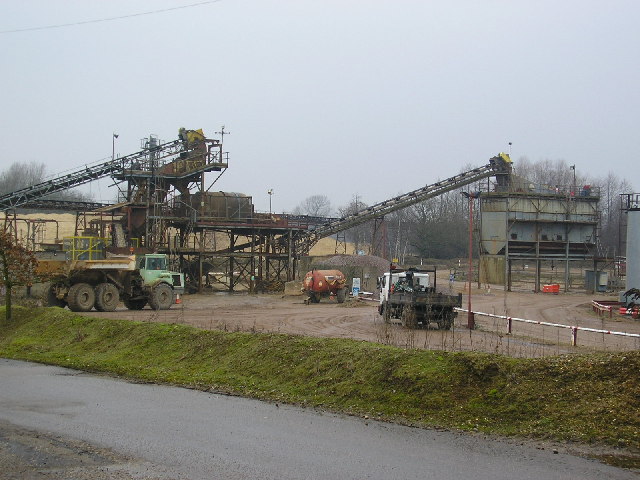According to the USGS sand & gravel is one of the most accessible natural resources in the United States
 |
| A sand & gravel pit Photo by Roger W. Hayworth |
Annual production of sand & gravel in the United States United States Canada Mexico
Demand for sand & gravel is mainly controlled by the level of construction activity that controls its demand. In the United States
 |
| Sand that has been processed and stored Photo by Claus Ablieter |
Mining sand & gravel is mainly a clean operation in comparison to your local corner bakery although to many people it is unsightly. This has led to a great misunderstanding on the part of the general public where the perception is that sand & gravel mining is harmful to the environment. This has caused many sand & gravel deposits to be withdrawn from mining for demographic reasons that in many areas has caused shortages of sand & gravel to occur.
Sand & gravel is a product having a high in-place value that considering the present business conditions costs approximately 50 cents per ton mile. The further it is necessary to transport the material the more it costs. Sand & gravel that costs less then $2.00 to produce per ton is apt to cost more then $20.00 per ton delivered.
A great deal of the problem that was the cause of a special investigation by the governors of the Northeast States was brought about by the mistaken perception that sand & gravel mining was environmentally hazardous; it isn’t. This misplaced perception has done nothing more then increase the cost of virtually all construction projects throughout the United States

There are so many great uses for sand and gravel. I am really glad that it is abundant in every state. That makes a huge difference for construction opportunities. http://www.westmoresupply.net/products.html
ReplyDeleteI'm really surprised that all fifty states produce sand and gravel. I would think that it would be limited to the mountainous regions. I wonder how close the gravel pit is to my neighborhood. It's brand new and they are still laying down gravel in the home excavation sites. Thanks for the interesting information.
ReplyDeleteI have been considering doing some landscaping in my yard. I can't decided which one is better to use, sand or gravel. I am not sure which one is best, do you know the pros and cons of using gravel and sand in landscapin g? http://www.burienbark.com/products/rocks-gravel-sand/
ReplyDelete